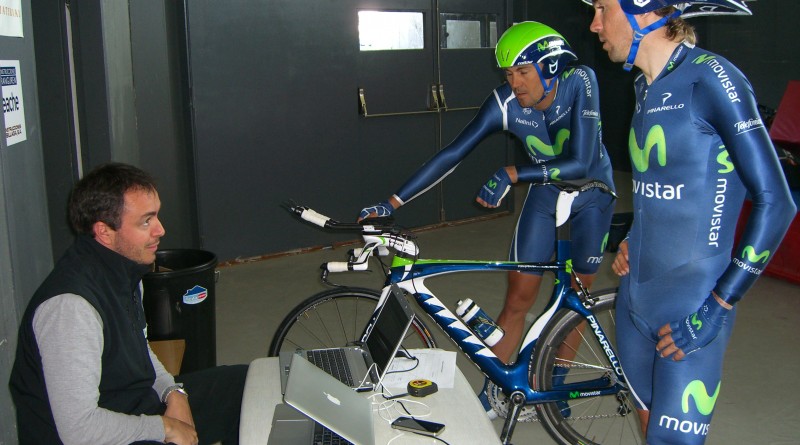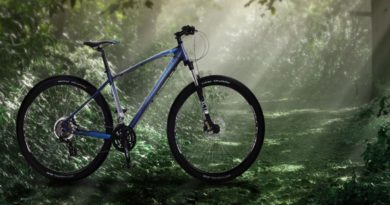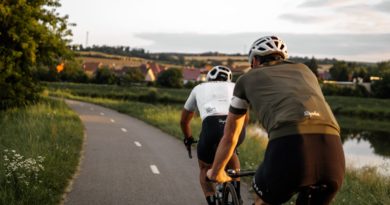The Jon Iriberri Interview: “Blind belief and reproduction is bad BikeFitting. Innovate, demonstrate, become great”
Among a handful of pioneers behind the early methodology in the bike fitting world, Jon Iriberri has measured up pro tour teams, designed instantly infamous products that have alleviated the cyclist’s common grumbles, taught the industry’s teachers and we’re thrilled to announce you’ll now find him as a regular columnist here at CyclingIndustry.News.
For the uninitiated, or simply those developing their understanding of professional bike fit, we leapt at the chance to interview a founding father of bike fitting. Read on for Iriberri’s take on effectively monetising your service, diagnosing a problem and challenging conventional understanding: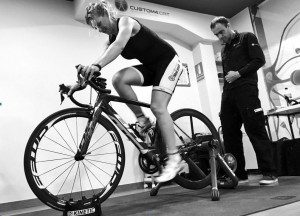
Tell us about your history in the bike fitting world:
My interest in cycling biomechanics and fitting began in the late 90s. I was working as a performance technician and training assistant for elite cycling at the Basque National Sport Agency. Our understanding of cycling biomechanics was quite poor and nobody around us was really intent on developing their knowledge in this area.
Things changed in 1999, though, when we began two research projects which we presented in 2004 and 2006 at the International Sport Engineering Association congresses and the Birmingham University Cycling Symposium, respectively. They are still cited in numerous major cycling scientific papers and books, and that was our first taste of success.
A side effect of our research was that we discovered many cyclists were interested in being physiologically tested and having a biomechanical assessment under the project parameters. Based on this huge interest we decided to start a small private company called custom4.us. This business offers biomechanical screening and consultancy services for cycling and running.
That was 15 years ago. Since then, I’ve been involved with the Movistar and LottoJumbo WorldTour teams as a biomechanical consultant, taught at the UCI’s World Cycling Centre in Aigle, and collaborated with the Trek Precision fitting program and several other cycling brands in the development of their products and services.
D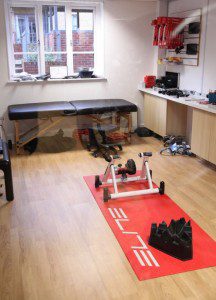 elivering my own courses to students is very satisfying. I’m fortunate to have developed many different projects with many different agents. I have met some truly brilliant people in my work, and amassed a huge amount of cycling industry experience – particularly in products and services. It is a really exciting and amazing job that I get to do 7 days a week.
elivering my own courses to students is very satisfying. I’m fortunate to have developed many different projects with many different agents. I have met some truly brilliant people in my work, and amassed a huge amount of cycling industry experience – particularly in products and services. It is a really exciting and amazing job that I get to do 7 days a week.
In your opinion, which have been the key advances in recent years when it comes to the science behind matching a customer to the right product?
Technological development and interest in bikefitting has grown exponentially over the last 20 years. It’s fascinating to see how this development has not always been consistent, as each technological evolution has brought about huge steps in our understanding, sometimes in ways that we didn’t anticipate.
There have been major advances in kinematical data management – from the basic goniometer through to digital analysis, onto electro goniometers, and from static 2D analysis to real-time 3D and even 4D perspectives – but our deeper understanding of kinetics and dynamic analysis still remains basically the same.
This must be the next step: wearable technology offering reliable real-time, real-world information from the real cycling situation. So small wireless Inertial Movement Units, wearable Electromyography, and contact point pressure measurement systems make the difference today. We see bikefitters offering biomechanics services and fittings based entirely on just kinematics, which is basically not enough if you want to a bike fit that truly works in the real world.
Is there an element of trial and error involved when exploring new ideas?
Absolutely. I always encourage my students to take their own path, to explore and try new solutions. Basically, don’t be complacent. Don’t settle for second best. Be vocal and inquisitive. We are working with humans and the solution should always be completely personalised. The difficulty is in working out how best to apply universal laws and good practice to each individual case.
Alternatively, if your method is basically based upon solid immutable ‘rules’, or no rules at all, then you probably need to develop your knowledge and experience base in order to do a proper job.
You’ve brought a few ideas to the table yourself – tell us about your own projects and products: 
My philosophy is to give a personalised solution to each individual, but also to improve the range of existing solutions available for each individual fit. You can choose between suitable products already on the market, or what I can make for you.
The first option is convenient and easy; most people go for that. The latter is much harder, but the satisfaction in helping our clients overcome these problems better is much higher. In my experience, contact points are key. That has lead me to be involved in making – with a sustainable business criteria – custom shoes and saddles with different specific ergonomics. I’ll also develop approaches that better help us accurately define the stack and reach required and offered in our custom-made frames.
Is the bike fitting community still learning, or is there a generally accepted set of principles nowadays?
It’s a bit of both. There are many professionals who don’t want to ask the complex questions, or do not feel they are able to understand complex fit issues. This often means they simply replicate existing errors or tendencies based on their limitations in screening or understanding.
On the other hand, there are many professionals who are conducting pioneering research and providing innovative solutions that develop our knowledge. These are the fitters who are at the state of the art, in my opinion.
The interesting thing is that not a lot of biomechanicists and theorists actually dedicate themselves to basic research, but there can be an army of technicians dedicated to bikefitting using their concepts. This is the sort of thing that leads to myths, such as KOPS, being taught without scientific basis or explanation for more than 20 years. Being a skeptic doesn’t mean never innovating or never trying new things. Innovate and then demonstrate, not just blind belief and reproduction. Build the underlying scientific foundation. So there are accepted principles, but they are also being continually challenged as technology and understanding improves. Plus of course you never stop learning – this is where experience helps make great bikefitters.
 What are the most common ailments complained about by cyclists and why?
What are the most common ailments complained about by cyclists and why?
The most common ones we see are low back pain, front and medial/lateral knee pain and forefoot pain. They occur in this order, as supported statistically by many scientific reports.
In my opinion, the contact points of the feet and pelvic area are key for providing workable solutions, but this must be interpreted analytically with regard to the complex bigger picture. For example, problems presenting at the hip can be manifestations of issues at the foot that have traveled up the biomechanical chain, or neck pain could find its real source in the pelvic-saddle contact. Some of it is misinformation. Some of it is a desire to emulate the pro position, or product choices.
Would you say it’s now essential for the modern bike retailer, even those serving the lower end of the market, to have a strong grasp of professional fit techniques?
I worry that the traditional bike shop will just become a maintenance service or bike shopping assistant (both maybe) in future.
The supermarket model, where the bikes are exposed and the customer chooses his preferred bicycle, doesn’t make sense any longer – it is going to be eaten by the internet and B2C direct-selling models such as Canyon and others (Trek USA, Rose Germany, and big internet retailers).
Physical bike shops must prioritise those services that are not as easy to digitalize: mechanics and bike fitting. Before we even get to the stage of offering full bikefitting services it is critical that the retailer knows how to fit a cleat perfectly to each customer and also which is the best saddle for each customer, and why. That is sadly just not the case currently.
How would you suggest the bike retailer goes about monetising their service to customers?
If the service level is very high it will be more valued economically, with better customers of higher value and more loyalty to that professional. Good service is its own product, and its own selling point. If the only differentiation between retailer or product is price, then it will reduce us all to minimal margins and we’re done.
In order to become accredited as a professional – what would you recommend in terms of education for the retailer?
I see a lot of industry attention for the bikefitting pack sold to some retailers that is based on light screen technology. This is successful initially, (for the fitting retailer mainly) but is economically unsustainable in the medium term because the value in a bikefit relies on the knowledge of the fitter, not the technology that definitely will be updated or made obsolete within just a few months or years.
I recommend learning as much as you can about fitting yourself and do not become fixated on one ‘school’ or system. Absorb it all and build your experience. It’s like the difference between a professional singer and a karaoke singer. One creates, the other just emulates without really knowing why.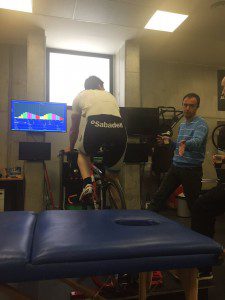
For me, strong knowledge twinned with experience and consistent investment in the technological side of bikefitting is key to survival. How do you pay €18,000 on equipment, plus rent a fitting space, pay your taxes and staff, if only charging €180 euros a fit? You need more than 350-400 fittings a year to break even. Economically, fitting can only be sustainable if each customer spends €400 per fitting session. The business plans of the fitting services in the future will be reliant on the value of the experience of existing fitting services.
What needs to happen for a wider adoption of bike fitting by cyclists, for example outside of road cycling which seems to be the stronghold?
The cultural change is coming, step-by-step. The cyclist sees himself in the professional cycling mirror: I shave my legs and go to the masseur. So in a few years it is going to spread everywhere, as the pro riders are showing the use and potential use of bikefitting.
Of course there is still lots of work to do. There are still many professional riders that are good examples of really bad fitting! I think more pro XC, track and CX riders will adopt bikefitting as an important part of their preparation and the fans will follow suit.
How often are factors outside of bike fitting (such as poor posture) causing medical problems that can make cycling uncomfortable?
Often. There are two factors that need to be borne in mind in cycling (and other sports) injuries. The pre-cycling motor pattern, stability posture, profilaxis and basic qualitative characteristics, as well as the performance/level of training/dedication axis.
Often the real cause of the injury is just the overuse of a structure under certain biomechanical conditions and that may not always be exceptionally bad. A bad biomechanical basis is obviously going to accelerate the process, though. There are people in bikefitting who obsess, believing that the whole problem lies in the screws and bike set-up, who overlook the fact the rider has developed significant scoliosis.
Regardless of the fit they decide on, they are going to be touching the saddle height and the cleats three times every day because of the physical pain they are in just from their physical condition.
Any key dates for the diary for anyone interesting in growing their knowledge?
There is not a lot of structured education in biomechanics. If there is a basic lack of scientific knowledge, there’s not a lot you can teach someone. They need to go back and build the foundation of their knowledge base themselves.
I have had tremendously good experiences at the International Cyclefit Symposiums, not because they give you the keys to the castle every edition, (which is what a lot of people are hoping for) but because of the opportunities there to develop your professional network, knowledge and experience with other  passionate and skilled fitters. Maybe a contact you make there invites you to join them at their studios, or you invite them to yours. I think that this is a really honest and organic way to improve: it is reflective, involved and the understanding you gain is deeper.
passionate and skilled fitters. Maybe a contact you make there invites you to join them at their studios, or you invite them to yours. I think that this is a really honest and organic way to improve: it is reflective, involved and the understanding you gain is deeper.
For this reason, I’m in regular contact with many colleagues, students and teachers worldwide: you get what you give, and this is especially true of bikefitting.
The next ICS is scheduled for November 2016, with details to be confirmed.
Want to ensure you catch Mr Iriberri’s posts on bike fitting going forwards? Pop your name in here for free industry news, analysis and commentary.
